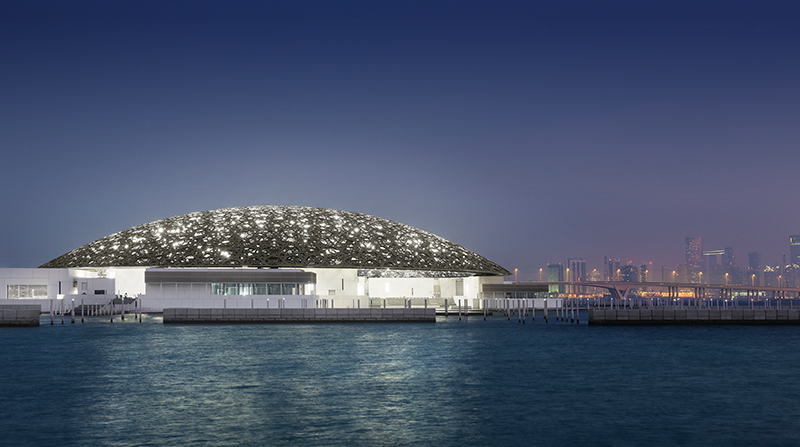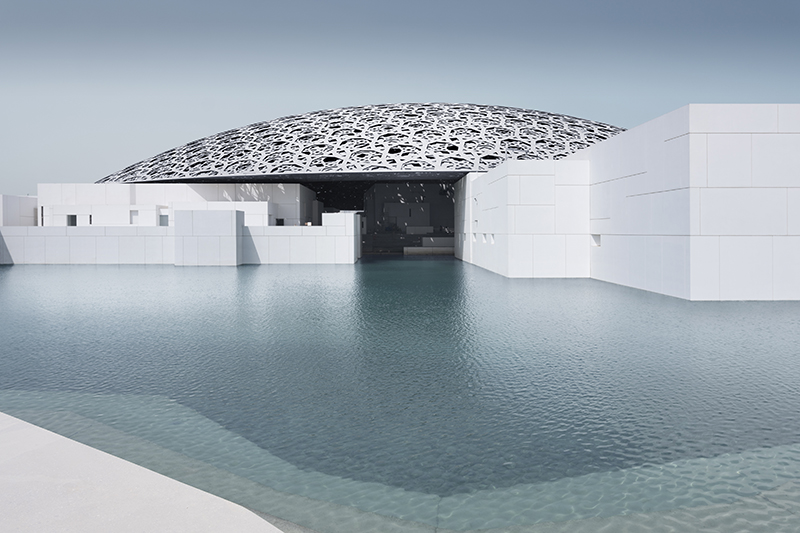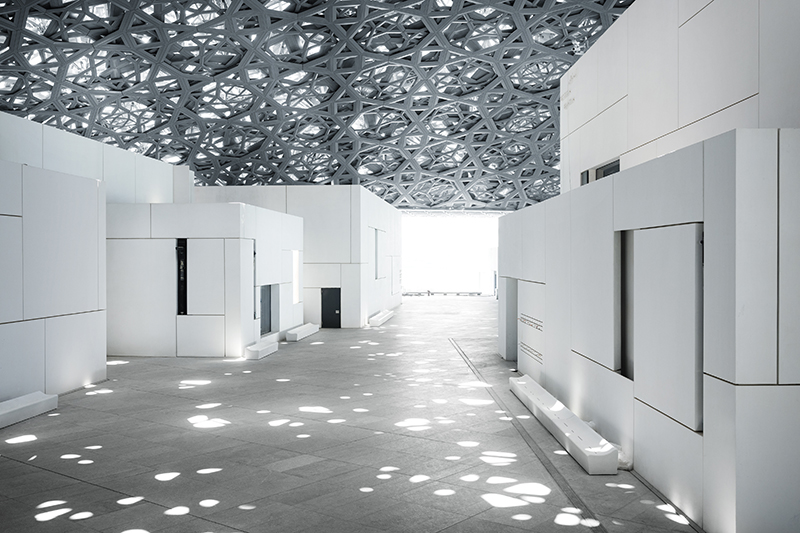

Louvre Abu Dhabi. Credit: Mohamed Somji
After opening in November 2017 to much fanfare, Louvre Abu Dhabi is making its mark on the UAE’s cultural scene in a big way. With chef-driven cuisine, modern design and an international collection spanning the centuries, this awe-inspiring spot is a must-stop for anyone traveling to the city.
These are just four of the things we love about this trend-setting museum.
The Architecture
A work of art in itself, Louvre Abu Dhabi is worth a visit if only to marvel at its otherworldly visage. To house the international museum, Pritzker Architecture Prize winner Jean Nouvel created a monumental masterpiece designed to look as if the future has landed.
Sitting atop a series of low rectangular buildings, a gorgeous dome of latticed metal composed of 7,850 geometric stars of various sizes allows sunlight to cascade through onto the whitewashed galleries and courtyards below, resulting in a visually stunning “rain of light.”
With a design reminiscent of an Arabian medina, the Abu Dhabi museum is made up of 55 detached buildings, 23 of which are dedicated galleries. The entire structure features a white-on-white palette with a blend of standard materials such as marble, concrete and metal that allows the artwork, the building’s phenomenal lines and spectacular gulf backdrop to take center stage.

Making a Splash in UAE’s Art World. Credit: Mohamed Somji
The Collection
Since 2009, Louvre Abu Dhabi has steadfastly been building an impressive collection that counts more than 600 pieces, from ancient to contemporary art, in its permanent reserve.
In honor of its partnership with Paris, the museum pairs 300 of its pieces side-by-side with 300 important works from 13 prominent French museums, including a Pollock from the Pompidou, a Monet from the d’Orsay and a statue of Ramses II from the Louvre. Leonardo da Vinci’s La Belle Ferronnière and Ai Weiwei’s Fountain of Light are two other stare-worthy pieces. The chronologically arranged collection is both a walk through art history as well as a narrative on the historical overlaps of art.
The permanent collection is a fascinating array. Paintings, sculptures and artifacts from different civilizations are displayed through the galleries in 12 distinct chapters to help foster a dynamic understanding of the interconnectivity of the world across time.
The Restaurants (well, really the view)
With floor-to-ceiling windows overlooking the Arabian Gulf, chef-driven cuisine and plates as pretty as the art on the walls, Louvre Abu Dhabi’s bistro-style restaurant and café are a surprising standout. Overseen by chef Roudy Petersen (of the popular Abu Dhabi seafood spot Catch), the museum’s eatery is a tasty detour after a morning of exploring the galleries.
Small but flavorful (and Instagrammable) bites are the name of the game here — try the camel mini burger dressed with harissa sauce and za’atar or the cool and crisp watermelon salad with coriander cress.
Or, head to the Art Lounge, the open-air café atop the restaurant whose plush relaxation area rubs shoulders with the brim of Nouvel’s show-stopping dome.

Under the Gorgeous Dome. Credit: Mohamed Somji
The Rotating Exhibitions
Louvre Abu Dhabi also aims to invigorate the Emirati art scene with four exhibitions that change every few months. The inaugural lineup includes “Co-Lab: Contemporary Art and Savoir Faire” (ending May 6), a collaboration between four UAE artists and four French manufacturers, and “Globes: Visions of the World,” an exhibition exploring humanity’s quest for knowledge and adventure through astronomy in the ancient Arabic and Islamic world.
Taking it outdoors, Louvre Abu Dhabi organized an interactive Highway Gallery on the Sheikh Zayed Road to Dubai where 10 30-by-19-foot billboards featuring the museum’s masterpieces were curated with accompanying 30-second radio broadcasts to make even your drive into the city a bit cultured.
